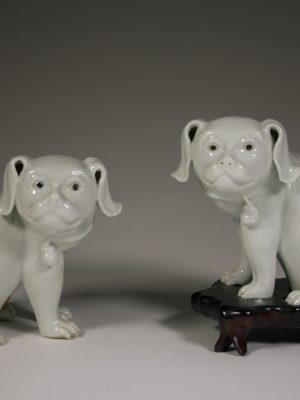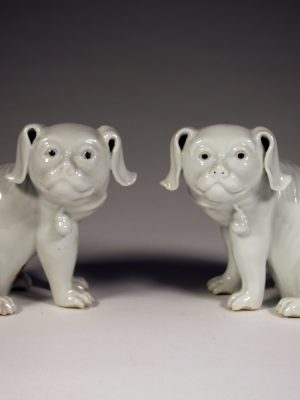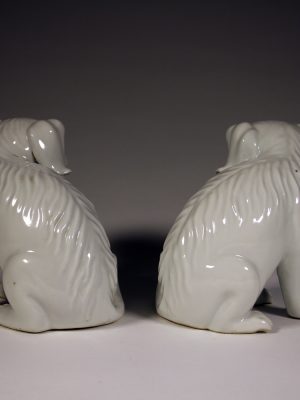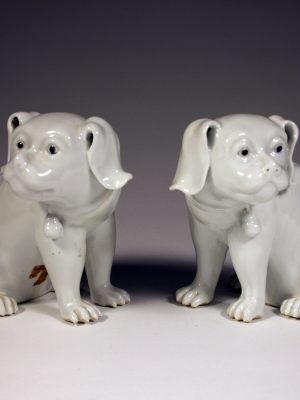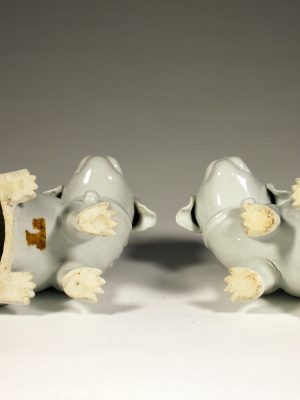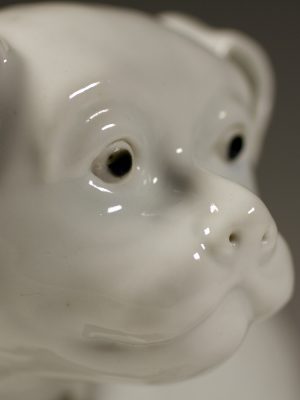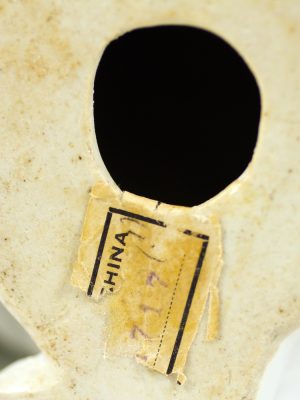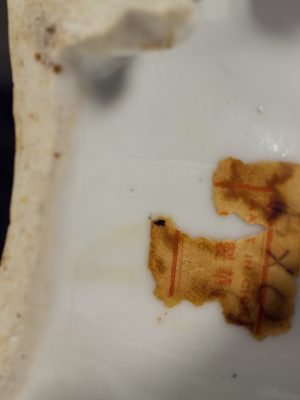This rare pair of porcelain pugs was found one at a time, a couple of years apart. They were made in China during the late eighteenth to early nineteenth century.
All I knew about the first when I bid on it was that it was a great model. At the listed price, it was undervalued regardless of the when and where. By the time the second was listed, I knew what I was looking at. Luckily for me, priced much like the first.
Between the two finds, a pair had turned up in the listings of a major auction house. Described as “White Glazed Porcelain Dogs, Qing Dynasty, Jiaqing Period”, dating them from 1796 to 1820. Impressive valuation as well.
One day I was looking through a different catalogue from the same auction house. It showed an additional example, this time described as a “Japanese White-Glazed Seated Dog, Late 19th Century”. It came from the collection of one of the world’s leading authorities, so one would think that the description was accurate. If so, then Japanese potters of the late nineteenth century must have copied an earlier model by their Chinese counterparts.
Even if there were no paper labels, I would be inclined to view this pair as Chinese. I may be mistaken but I think that if they were Japanese, the pads on the bottom of the paws would have been neatly carved into the underside. The underside of these is like the Blanc de Chine and Qianlong Cats. Crisply cut edges to define the claws but no pad definition.
Both these dogs look to have been pressed and assembled from nine separately moulded parts. The porcelain is pressed thinly enough to show translucency on the interior wall when held in front of a light. The area of the eyeball was left unglazed. The irises look like were done in a black underglaze/oxide. The white glaze has a slightly blueish tint.
Each about 15.2 cm in height.
See Sotheby’s “Fine Chinese Ceramics and Works of Art” London 07 November 2012 and “Chinese Export Porcelain from the Private Collection of Elinor Gordon” New York 23 January 2010.

